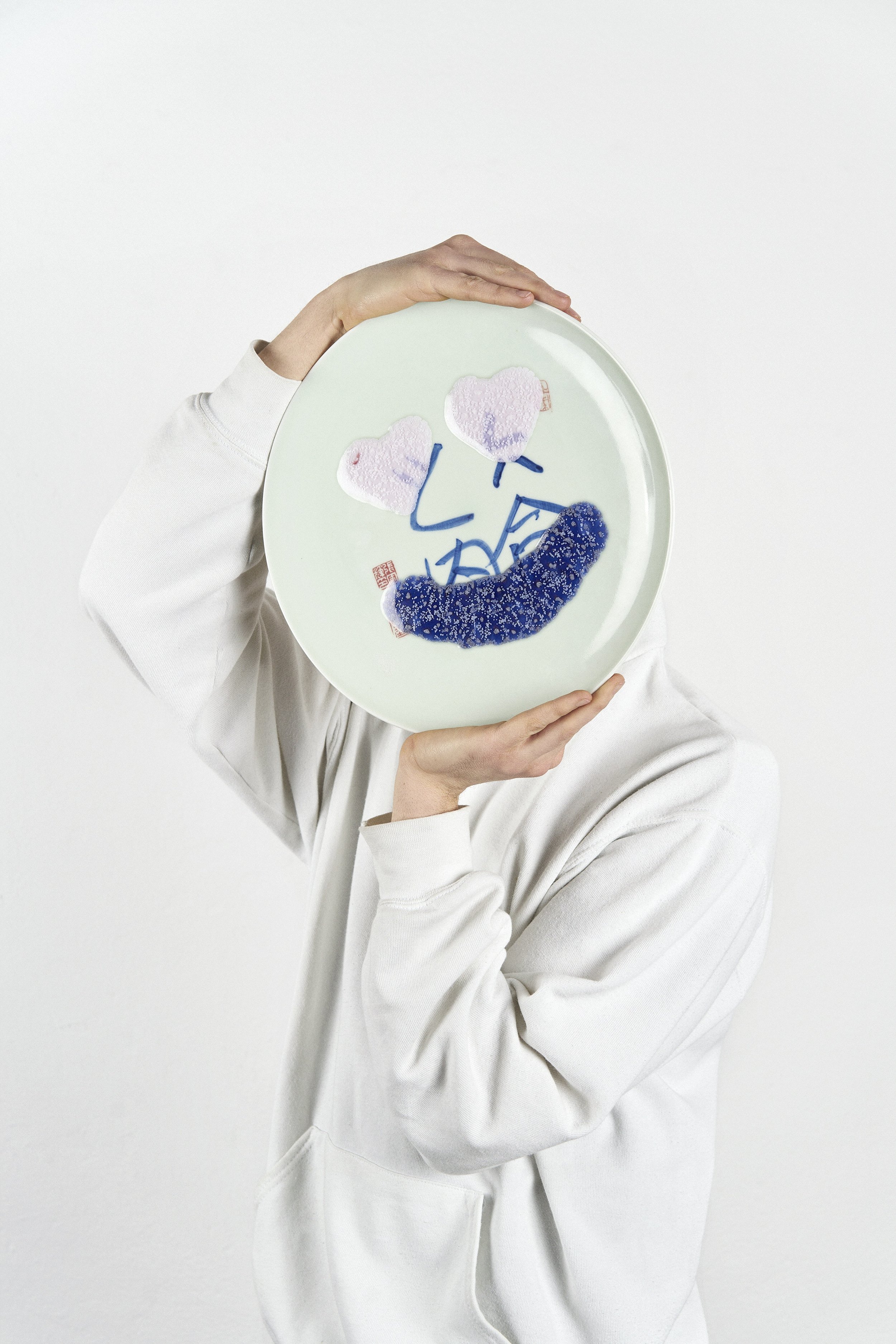A Meeting of Waste Streams
Expressive Proverbs by Attua Aparicio Torinos for MDR Gallery (photo: Roman Häbler and Matteo Visentin).
In 2019, the designer Attua Aparicio Torinos travelled to Jingdezhen, China, to undertake a design residency focused on the city’s centuries-old porcelain tradition. “I started to look at plates,” she explains. Behind the city’s daily market stalls and factory complexes loitered mountains of rejected porcelain objects that were deemed too flawed for sale. “There were plates everywhere, which looked so beautiful in a way, but also wasteful.”
Porcelain production is a large component of Jingdezhen’s infrastructure and makes up more than half of the city’s waste. Given the associated costs of recycling, waste plates are often simply abandoned. It is a material chain that Aparicio Torinos soon connected to that of another material. “My partner works with borosilicate glass, which has a different composition to normal glass, meaning that it can’t be put into regular recycling [streams],” she explains. “Because it’s used in very small amounts compared to normal glass, there is no real recycling system. I started thinking about how I could use this glass to make something.”
Aparicio Torinos saw a potential companionship between her two discarded materials. Porcelain in Jingdezhen is fired at up to 1,310°C, making it an ideal carrier for a material like borosilicate, which can likewise withstand extremely fierce heat. While common glass would melt into a slick pool at such temperatures, chunks of borosilicate retain some form. When fired, the glass melts like chocolate chips, producing rock-like, speckled glaze formations that bloom with igneous textures. “Even a lifetime isn’t enough time to master the potential of ceramics,” says Aparicio Torinos. “You always feel that there are still things to try.”
Armed with the new technique, the designer set about producing Expressive Proverbs, a series of 100 plates, hand- painted with traditional Chinese proverbs that have been overlaid and glazed with emoji forms. “There can always be a language barrier when you travel, but it felt more extreme in China because the alphabet was totally alien to me,” she says. “There were so many cultural layers that I wanted to understand, but I felt like I understood nothing. Emojis were all I could use to communicate.”
Words Maxime Weiss
This article was originally published in Disegno #26. To buy the issue, or subscribe to the journal, please visit the online shop.

